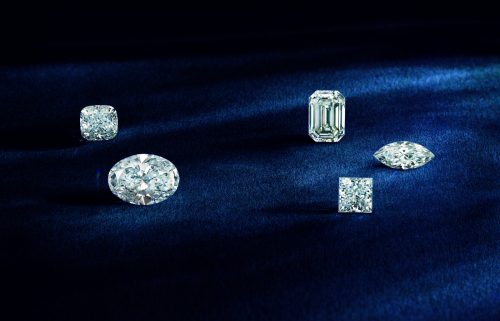A common question that jewellers receive is; how does diamond shape affect its price? In today’s article we will be discussing some of the key factors that go into the cost of a diamond.
Diamonds are an essential part of most custom jewelry pieces, especially engagement rings. When shopping for a diamond, one of the crucial factors to consider is its shape. The shape of a diamond not only influences its visual appeal but also plays a significant role in determining its price. In this guide, we will delve into the world of diamond shapes and explore how they can differ in their general cost.
Understanding Diamond Shapes
Diamonds come in a variety of shapes, each with its unique look and aesthetic appeal. The most popular diamond shapes include round brilliant, princess, emerald, cushion, radiant, pear, marquise, and oval. Each shape is crafted with precision to enhance the diamond’s brilliance, fire, and overall appearance.
Factors Impacting Diamond Prices
When it comes to diamond pricing, several factors come into play, such as the famous 4Cs: carat weight, color, clarity, and cut. However, diamond shape is an additional aspect that influences the price. Let’s explore how diamond shape affects its value:
Rarity and Demand
The rarity and demand for a particular diamond shape impacts its price. Round brilliant diamonds, known for being the brightest of all diamond shapes, are the most popular and highly sought-after shape. As a result, round diamonds tend to be priced the highest compared to other shapes. Conversely, diamond shapes that are less common or in lower demand may be priced comparatively lower.
Diamond Yield
The process of shaping/ cutting a rough diamond into its desired shape results in wastage of the original material. Different diamond shapes have varying degrees of yield and loss. For instance, generally when it comes to round diamonds, only around 40% of the original stone remains after the meticulous cut and polish. In contrast, princess cut diamonds make use of approximately 80% of the stone’s original weight. This disparity in yield between round and princess cuts directly impacts the price, as the round cut requires a larger amount of rough stone, making it comparatively higher in cost.
Labor and Expertise
The complexity and skill required to cut and shape a diamond also influence its price. Some diamond shapes, such as emerald cut, may require fewer facets and less intricate cutting, reducing the labor and expertise required. On the other hand, shapes like round brilliant, oval, or marquise demand precise cutting techniques and extensive craftsmanship, which can increase the price due to the additional effort involved.
Market Trends and Preferences
Market trends and consumer preferences can significantly impact diamond prices. As fashion and jewelry trends evolve, certain diamond shapes may gain or lose popularity, affecting their market value. For example, if a particular celebrity or influencer popularizes a specific diamond shape through their engagement ring choice, it can create a surge in demand and potentially drive up prices.
For some extra Hollywood inspiration check out this article on famous engagement rings word by celebrities.
Comparing Diamond Shapes
Now, let’s take a closer look at how specific diamond shapes impact their price range:
Round Brilliant
As the most popular and classic diamond shape, round brilliants generally command higher prices due to their exceptional brilliance, precise cutting, and high demand.
Princess and Cushion
Princess and cushion-cut diamonds offer a balance between brilliance and uniqueness. They are slightly more affordable than round brilliants while still maintaining a desirable sparkle.
Emerald and Asscher
These step-cut diamond shapes are known for their elegant and sophisticated appeal. Due to their distinctive cutting style and lower demand, emerald and Asscher-cut diamonds can be more affordable compared to round brilliants.
Marquise and Pear
Marquise and pear-shaped diamonds are elongated and exhibit a unique, eye-catching look. These shapes often offer excellent value for money due to their elongated appearance, which makes them appear larger than their actual carat weight.
Oval Diamonds
Oval diamonds combine the brilliance of round brilliants with an elongated shape. They offer a great alternative for those seeking a larger-looking diamond at a more affordable price compared to round brilliants.
Personal Preferences and Budget
While diamond shape undoubtedly affects its price, it’s essential to consider personal preferences and budget when choosing the perfect diamond. Each shape has its distinct allure and character, and what matters most is finding a diamond shape that resonates with your individual taste and style while staying within your budget.
When it comes to diamond shopping, understanding the impact of diamond shape on pricing can be important. The rarity, demand, diamond yield, labor, expertise, and market trends all play a significant role in determining the price of a diamond. Whether you opt for a classic round brilliant, a timeless princess, or a unique marquise, it’s important to find a diamond shape that aligns with your preferences and budget. By considering these factors, you can make an informed decision and select a diamond that not only captivates with its shape but also represents an excellent investment in terms of beauty and value.
Thank you for checking out this article “How Does Diamond Shape Affect Its Price?”. For more information be sure to visit our education page. When the time comes to find your own perfect diamond and engagement ring in Winnipeg please get in touch to book your appointment with our expert diamond and design team!

